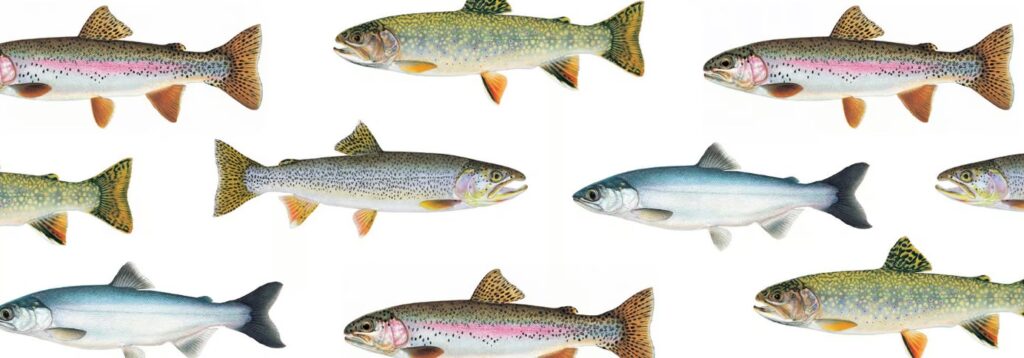Below are the most common freshwater fish targeted by anglers in B.C.
Species Stocked by the Freshwater Fisheries Society of BC
Rainbow Trout
This is B.C.’s most common freshwater sport fish. Powerful and aggressive, rainbow trout are known for jumping clear of the water when hooked.
Distribution: Resident to lakes and rivers throughout B.C., preferring cool water.
Size: Can grow up to 90 cm in length, and weigh up to nine kg (19.8 lb)
Identifying features: Silvery colour, small head and mouth, black spots along the back and generally along the sides, a red/pink band along the lateral line, and no teeth in the throat (at the back of the tongue).
Strains: The Freshwater Fisheries Society of BC stocks various strains of rainbow trout, including Fraser Valley, Pennask, Horsefly, and Blackwater. Each strain has behavioural differences (like different feeding patterns), and slight variations in appearance
View a stocking report to find lakes stocked with rainbow trout.
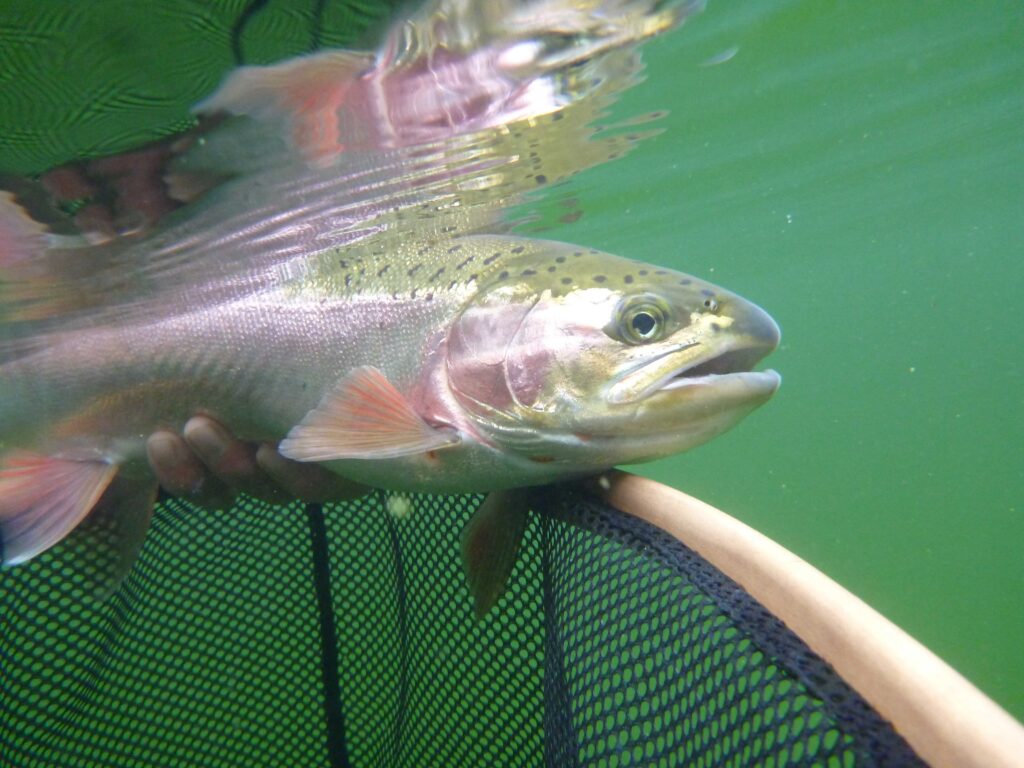
Westslope Cutthroat Trout
Found in some of eastern B.C.’s high-elevation lakes, rivers and streams, these fish have a reputation for aggressively attacking lures and flies.
Distribution: Lakes, rivers and streams in the upper Columbia River drainage, on the western slope of the Rocky Mountains in B.C.’s Kootenay Region.
Size: Can grow up to 50 centimetres in length and weigh 0.9 kilogram (2 lbs).
Identifying features: Spots over back, caudal and dorsal fins, body colour can vary greatly, distinctive red slashes under the lower jaw, and a large mouth that extends past the jaw.
View a stocking report to see lakes stocked with westslope cutthroat trout.
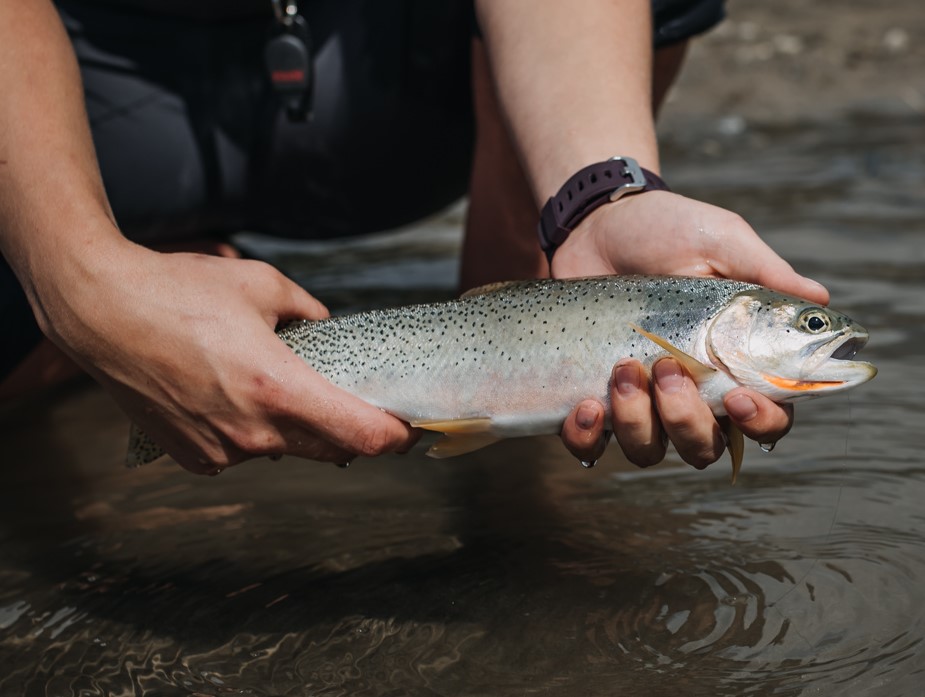
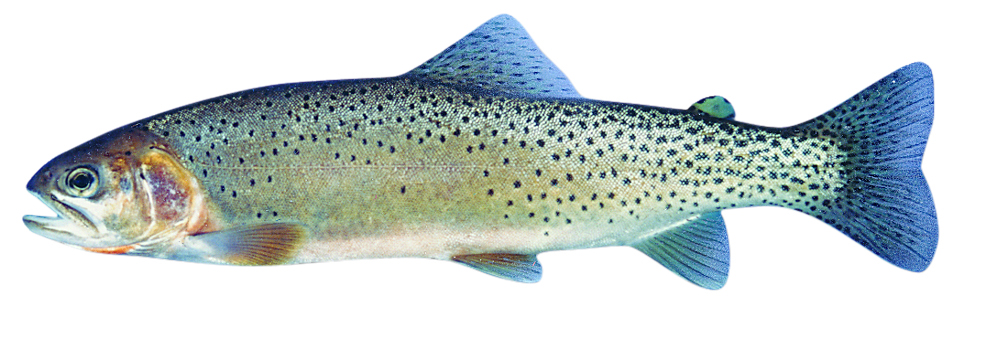
Coastal Cutthroat Trout
A fast and aggressive fish, the coastal cutthroat feeds on other fish for a large part of its diet. Travelling in schools, they can provide fast and furious fishing.
Distribution: Gravelly lowland streams and lakes, usually less than 150 km from the coast.
Size: Can grow up to 68 cm in length, and weigh up to 3.6 kg (7.9 lb)
Identifying features: Spots all over a streamlined body, distinctive red slashes under the lower jaw (may be faint), a large mouth that extends past the jaw, and teeth in the throat (at the back of the tongue).
View a stocking report to find lakes stocked with coastal cutthroat trout.
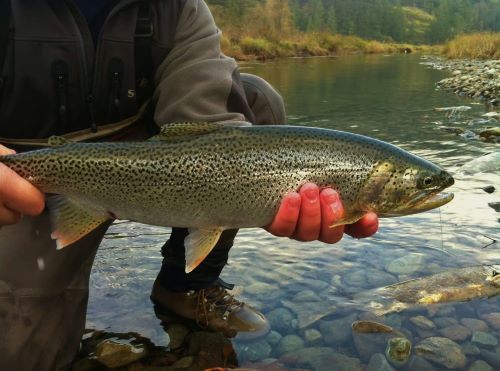

Kokanee
A hard-fighting and delicious fish, kokanee are actually sockeye salmon that spend their entire lives in fresh water (they do not migrate to sea). Kokanee feed mainly on plankton, but will eagerly take flies and lures – especially during the summer months.
Distribution: Major watersheds throughout B.C., but most common in large lakes in the southern and interior regions.
Size: Can grow up to 60 cm in length, and weigh up to 4.5 kg (9.9 lb)
Identifying features: Shiny, chrome-coloured bodies with no or very light spotting and a long anal fin (13 or more rays); when spawning, kokanee bodies turn red, and their heads green.
View a stocking report to see which lakes we stocked with kokanee.
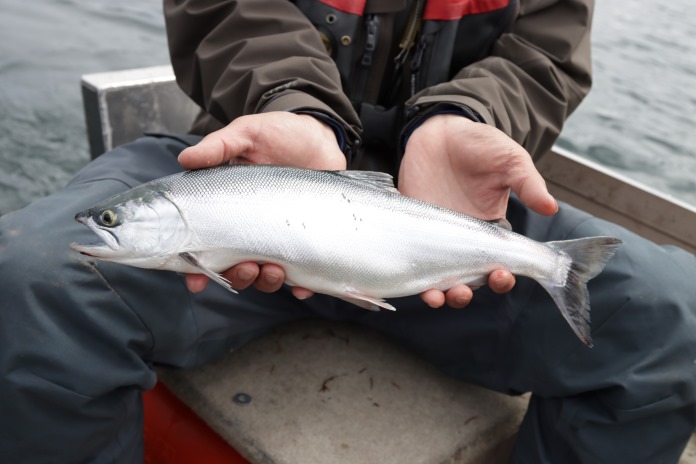

Eastern Brook Trout (Char)
When hooked, brook trout will dive deep, often heading for the bottom as they pull the line from your reel. These fish rarely jump, but they always put up an exciting fight.
Distribution: Native to eastern North America and stocked in select B.C. interior lakes.
Size: Can grow up to 86 cm in length and weigh up to 6.6 kg (14.5 lb)
Identifying features: Deep-bodied, with red spots surrounded by blue halos, white leading edges on the pectoral and pelvic fins, and worm-like markings (vermiculations) on the dorsal fin. Despite the common name, these fish are actually a char, not a trout.
View a stocking report to see lakes stocked with brook trout.
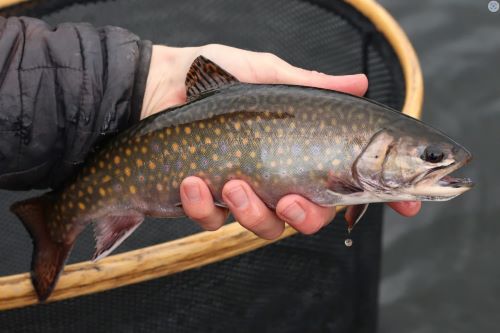
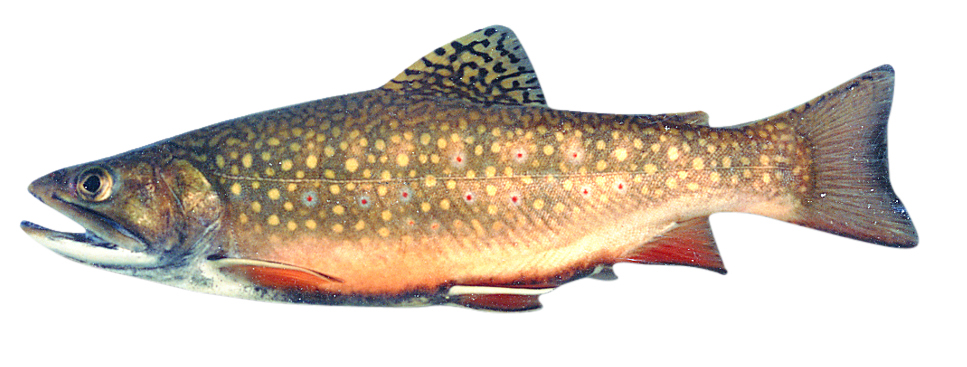
Steelhead Trout
Steelhead are genetically the same as rainbow trout. They spend some of their youth in fresh water, migrate to the sea, then return to fresh water to spawn. The Society raises and releases steelhead into a handful of Lower Mainland rivers for recreational angling.
Distribution: Coastal rivers in the Skeena Region, the Lower Fraser and Vancouver Island, and southern interior rivers that drain into the middle Fraser River.
Size: Can grow up to 120 cm in length, and weigh up to 21 kg (46.3 lb)
Identifying features: Identical to the rainbow trout, steelhead attain a larger size during their time in the ocean.
View a stocking report to find rivers where anadromous steelhead were released.
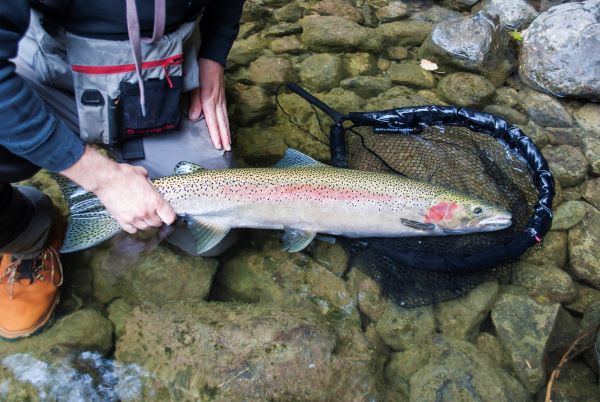

Other Common Species
Many species not traditionally recognized as sport fish are abundant and easy to catch. Here’s a quick guide to some other fish that you can catch – and where to look for them.
Peamouth Chub
You can catch peamouth chub from the lakeshore, riverbanks, or piers. Look for rock piles, wood, bays, and any backwaters that may shelter them. During the summer months, peamouth chub can be found in the shallow, weedy areas of rivers, streams, and lakes.
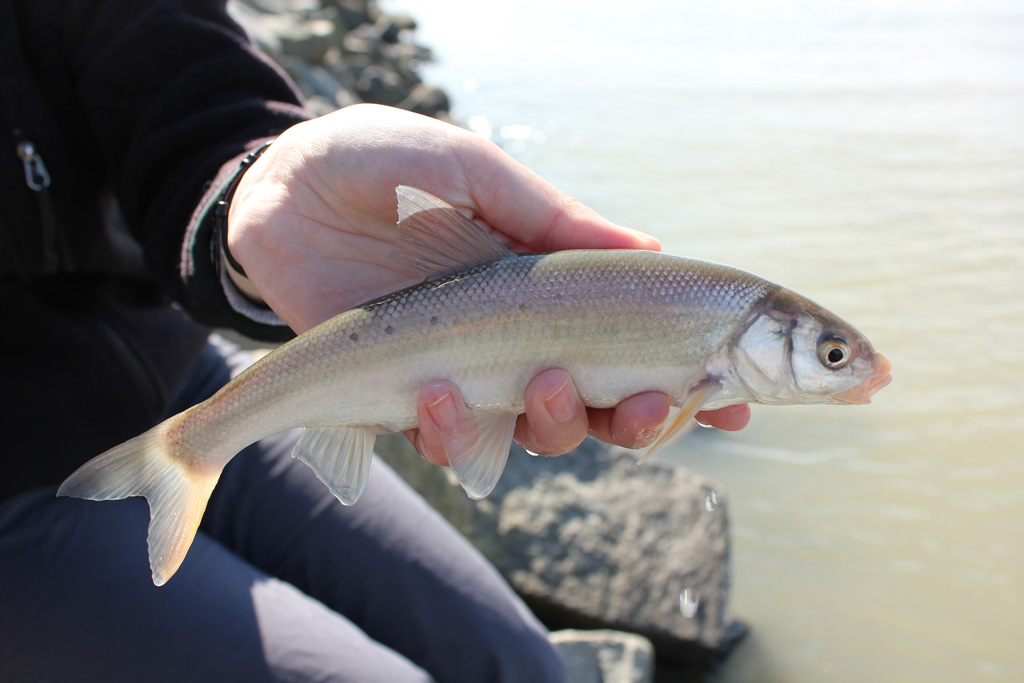
Northern Pikeminnow
This species can be found in most of B.C.’s major river systems, and in many lakes throughout the province. Although not generally identified as a sport fish, they will eagerly take flies, lures, and bait. These fish are great fighters, and can be easily caught from shore, docks, or piers.
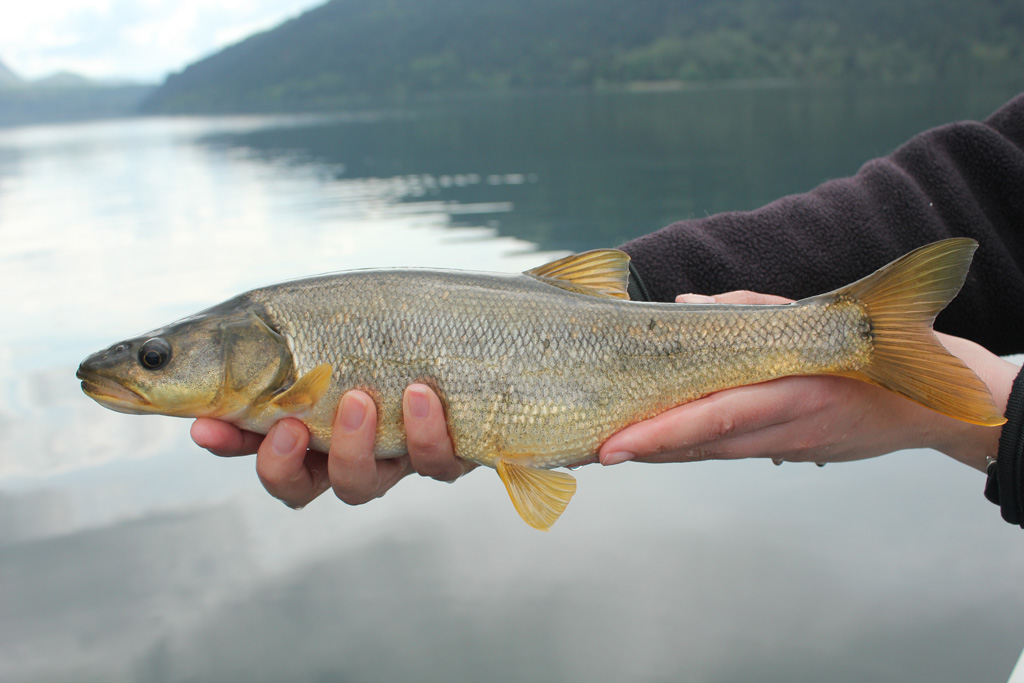
Carp
Carp feed on or near the bottom, searching for the food by using their barbels. You’ll find them in sloughs, small lakes, shallow bays of large lakes, and slow-moving streams with abundant aquatic vegetation and sandy to muddy bottoms. These fish are common, and can be easily caught using basic still-fishing techniques.
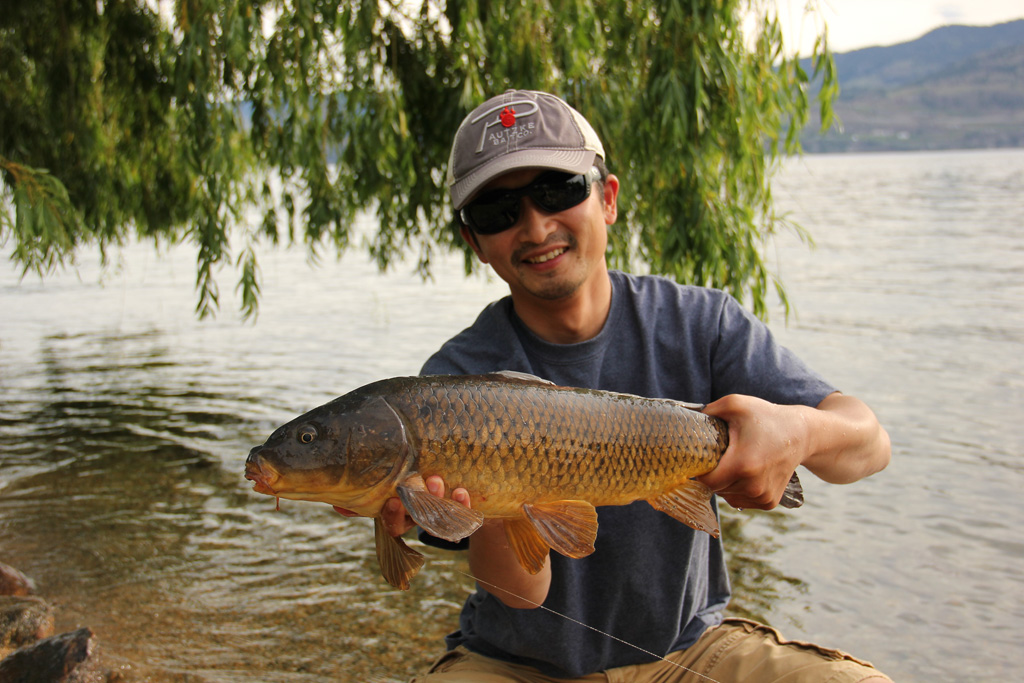
Suckers
Suckers are among Canada’s most abundant and widespread fish, with many different species in B.C. The largescale and common sucker are the most plentiful. The Salish sucker, which lives only in the lower Fraser Valley, is the smallest variety, and is a species at risk (this is an example of why it is important to know your fish). Suckers are characterized by round mouths surrounded by thick, fleshy, protruding lips, which they use to suck up their food from river- and lake-bottoms.
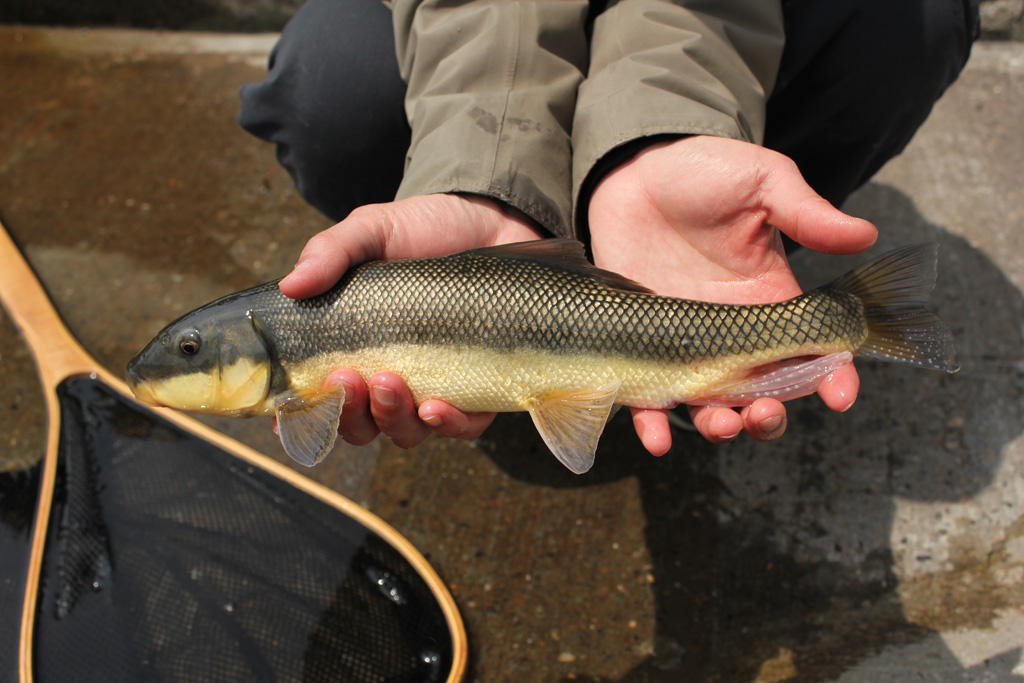
Invasive Fish Species
While fishing, you might catch any of the following non-native species. These fish often compete with native fish species for resources, impacting resident fish stocks. Many B.C. water-bodies contain non-native fish which have been illegally stocked. If you catch an invasive species, and the regulations permit, you may harvest the fish. Where fisheries for the invasive fish are closed, you must not target these species and any incidental catches must be released.
Smallmouth Bass
Averaging 20 to 40 centimetres (eight to 16 inches) long, these hard-hitting fish put up a great battle when hooked. Look for shallow waters with structures like reeds, logs, and rocks. Bass are most aggressive during spawning, which occurs from late May through to July.
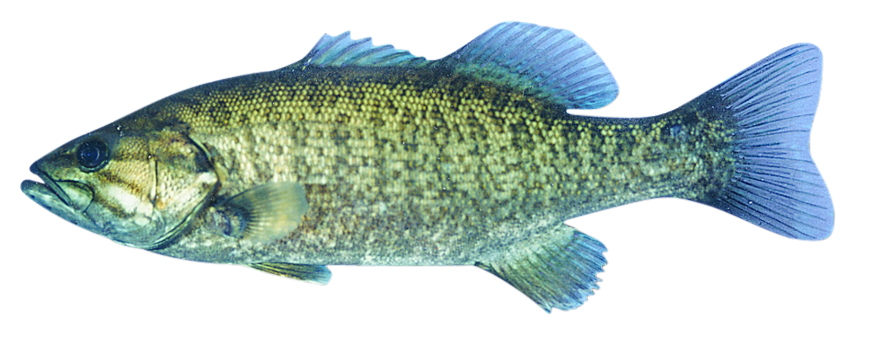
Yellow Perch
Yellow Perch are native species in the lower Peace watershed; outside of this area they are considered invasive. When fishing for yellow perch in lakes, look for waters well-covered with reeds and weeds. Fishing near artificial structures like floating docks and piers can also be extremely productive. Yellow perch average 15 to 20 centimetres (six to eight inches) in length.
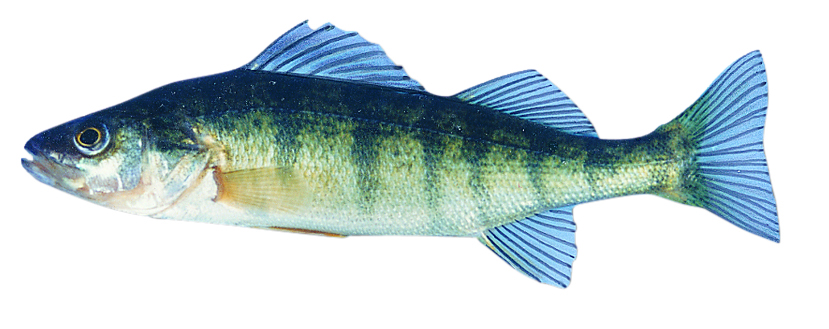
Pumpkinseed Sunfish
The pumpkinseed sunfish is a native of southeastern Canada. An alien species in B.C., you can find the pumpkinseed in small lakes and ponds, and in the shallow, weedy bays of larger lakes. The pumpkinseed prefers clear water and the cover of submerged vegetation. It is common to find these fish in large schools.
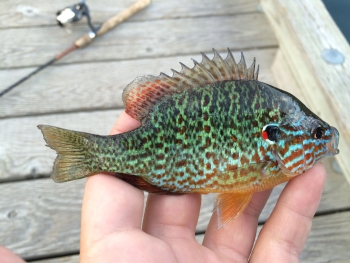
For more information on invasive species, see Invasive Freshwater Fish: What You Need to Know.
